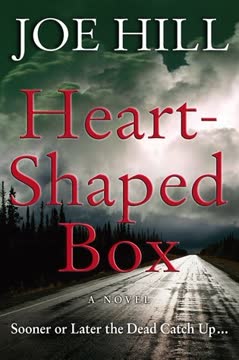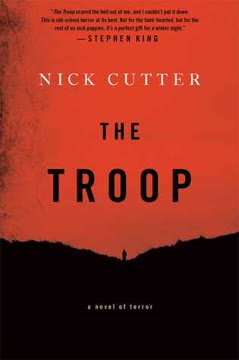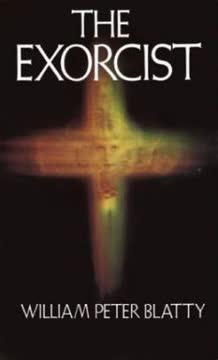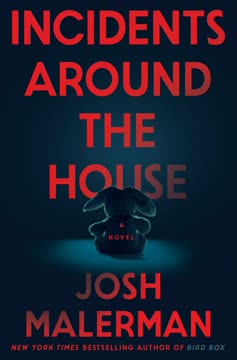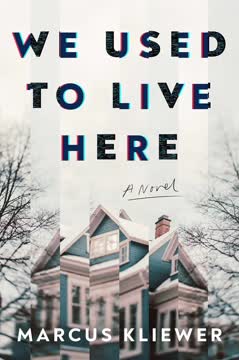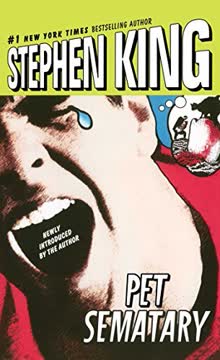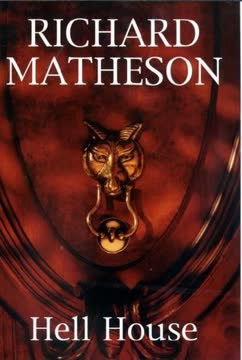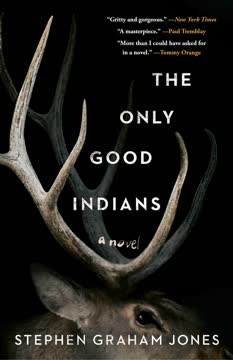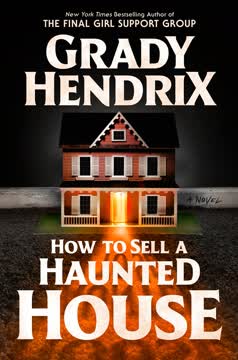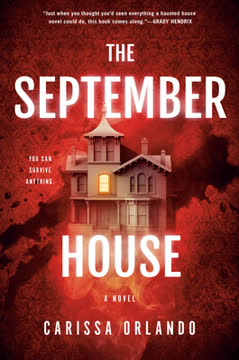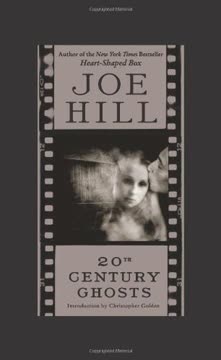Plot Summary
1. The Ghost in the Suit
Aging rock star Judas Coyne, collector of macabre artifacts, impulsively buys a dead man's suit online, supposedly haunted by the seller's stepfather's ghost. Delivered in a black, heart-shaped box, the suit arrives at Jude's rural farmhouse, where he lives with his much younger girlfriend, Georgia (real name Marybeth). The purchase seems like a lark—until strange, chilling events begin. The suit's presence brings a sense of dread, and the dogs react with terror. Jude's world, already haunted by past traumas and failed relationships, is about to be invaded by something far more literal and deadly.
2. Haunting Unboxed
Jude and Georgia quickly realize the haunting is real. The ghost, Craddock McDermott, appears as an old man in the suit, with eyes obscured by black, writhing scribbles. He brings with him a suffocating cold and a sense of inescapable doom. The haunting escalates: electronics malfunction, voices whisper threats, and Jude's past is dredged up. The ghost's vendetta is personal—he blames Jude for the suicide of his stepdaughter, Anna (Florida), a former lover of Jude's. The haunting is not just supernatural but psychological, targeting Jude's guilt and regrets.
3. Black Scribbles, Black Dogs
Craddock's attacks intensify, manipulating reality and perception. Jude's dogs, Bon and Angus, sense the ghost's presence and react violently, sometimes appearing as shadowy, supernatural versions of themselves. The ghost's power is not limited to Jude—anyone who tries to help him is threatened with death or madness. Jude's assistant, Danny, is driven to suicide by the ghost's influence. The black scribbles over Craddock's eyes become a recurring symbol of death and the inability to see or escape fate.
4. Anna's Shadow
Jude is forced to confront his relationship with Anna, who suffered from depression and ultimately killed herself after he sent her away. Anna's presence lingers, both as a memory and as a possible spiritual force. Through letters, dreams, and supernatural messages, Jude learns that Anna's death was not just a suicide but the result of long-term abuse by her stepfather, Craddock, and the complicity of her sister, Jessica. The haunting is revealed to be a twisted act of revenge and a cover-up for family secrets.
5. The Dead Pull Down
Craddock's haunting is a curse: "The dead pull the living down." Anyone who aids Jude is doomed. The ghost manipulates people into self-destruction, as with Danny, and tries to drive Jude to suicide. The curse is psychological warfare, exploiting guilt, trauma, and the fear of being alone. Jude's attempts to seek help only endanger others, isolating him further. The ghost's power is rooted in hypnotism and psychological manipulation, skills Craddock honed in life.
6. Escape Attempts
Jude and Georgia try to escape, burning the suit and fleeing their home with the dogs. But the ghost follows, appearing wherever they go. Craddock's vendetta is relentless, and his threats become more direct and violent. The couple's journey south, toward Anna's family, is both a physical and emotional descent into the heart of darkness. Along the way, they confront their own pasts, the limits of their relationship, and the reality that running is not enough.
7. The Nightroad Beckons
The road trip becomes a journey through Jude's and Georgia's histories, as well as a literal passage into the territory of the dead. The "nightroad" is both a metaphor for the path to death and a supernatural space where the living and the dead intersect. Craddock's ghost pursues them, his truck a spectral presence on the highway. The couple seeks answers from Anna's surviving family, hoping to break the curse.
8. The Dogs' Defense
Jude's dogs, Bon and Angus, are revealed to be more than pets—they are animal familiars, capable of confronting the supernatural. In a climactic confrontation, the dogs' shadow-selves attack Craddock, buying Jude and Georgia precious time. The dogs' loyalty and courage contrast with the human betrayals that led to Anna's death. Their sacrifice is a turning point, showing that love and loyalty can stand against evil, even if only briefly.
9. The Golden Door
Desperate, Jude and Georgia use a Ouija board to contact Anna's spirit. Anna communicates cryptically, urging them to "make a door" so she can return and confront Craddock. The "golden door" is a symbolic and literal passage between worlds, created with blood and sacrifice. Georgia, whose infection mirrors Anna's self-harm, becomes the medium through which Anna can act. The living and the dead must work together to end the haunting.
10. Family Curses
The story's climax takes place at Jude's childhood home, where his dying father, Martin, lies. The house is a nexus of old wounds and unresolved pain. Craddock possesses Jude's father, turning him into a vessel of violence. The confrontation is both physical and spiritual, as Jude and Georgia fight not just for their lives but for the possibility of breaking the cycle of abuse and revenge that has haunted both families for generations.
11. The Price of Secrets
The truth about Anna's death and the Price family's complicity is revealed in a violent showdown. Jessica, Anna's sister, is exposed as an enabler and abuser, her own daughter a victim. The ghost's curse is rooted in the family's refusal to face the truth. Only by exposing the secrets and confronting the abuser can the cycle be broken. The cost is high: blood, loss, and the near-destruction of everyone involved.
12. Blood and Redemption
In the final confrontation, Georgia is mortally wounded, and Jude is pushed to the brink of death. Using blood, music, and memory, Jude creates the "door" Anna needs. Anna's spirit, aided by the shadow-dogs, drags Craddock into the light, ending his reign of terror. The dead claim their own, and the living are left to pick up the pieces. The battle is not just against a ghost but against the legacy of pain and silence.
13. The Doorway Opens
Jude experiences a vision of the afterlife, a liminal space where Anna and Georgia (Marybeth) exist together. The boundaries between the living and the dead blur. Through love, forgiveness, and the willingness to face the past, Jude is able to return to life, changed but not destroyed. The door between worlds closes, but the scars remain.
14. The Living and the Dead
Jude and Marybeth survive, though both are physically and emotionally scarred. The dogs are gone, but their sacrifice is remembered. The couple returns to the world of the living, changed by their ordeal. The past cannot be erased, but it can be faced. The dead are not forgotten, but their power to harm is broken.
15. After the Haunting
Jude and Marybeth try to rebuild their lives. They mourn the dead, honor their memories, and struggle with the trauma of what they've endured. The world is not magically healed, but there is hope. The couple finds solace in each other, in music, and in the small acts of kindness and connection that make life bearable.
16. The Past That Remains
The aftermath of the haunting lingers. Jude and Marybeth confront the legal and social consequences of their actions. The truth about Anna's death and the Price family's crimes comes to light. The survivors are left to grapple with guilt, forgiveness, and the knowledge that some wounds never fully heal.
17. New Songs, Old Scars
Jude returns to music, channeling his experiences into new songs. His art becomes a way to process trauma and keep the memory of the dead alive. The scars—physical and emotional—remain, but they are part of the story. The couple finds meaning in survival, in love, and in the act of creation.
18. The Road Goes On
Life continues. Jude and Marybeth build a future together, haunted but not destroyed by the past. They adopt new dogs, travel, and find moments of peace. The dead are never entirely gone, but their hold is broken. The story ends with a sense of hard-won hope: the road goes on, and the living must keep moving, singing, and loving, even in the shadow of the heart-shaped box.
Characters
Judas Coyne (Jude)
Jude is a retired heavy metal musician in his fifties, defined by his fascination with the macabre and his inability to let go of the past. Scarred by an abusive childhood and failed relationships, he collects grotesque artifacts as a way to control his fears. His relationship with younger women, especially Anna (Florida) and Georgia (Marybeth), is both a search for connection and a means of self-punishment. Jude's psychological journey is one from avoidance and cynicism to confrontation and, ultimately, a kind of redemption. The haunting forces him to face his guilt, his complicity in Anna's death, and the legacy of abuse in his own family. His development is marked by increasing vulnerability, the rediscovery of love, and the willingness to sacrifice for others.
Georgia (Marybeth Kimball)
Marybeth, known as Georgia, is Jude's much younger girlfriend, a former stripper with a traumatic past. She is tough, sarcastic, and fiercely loyal, but beneath her armor lies deep pain from childhood abuse and self-destructive choices. Her relationship with Jude is both a lifeline and a source of conflict, as she struggles with her own worth and the fear of abandonment. Marybeth's infection, mirroring Anna's self-harm, makes her the medium through which Anna's spirit can act. Her courage, empathy, and willingness to face the supernatural make her essential to the story's resolution. She evolves from a damaged companion to an active agent of healing and closure.
Craddock McDermott
Craddock is the main antagonist, a hypnotist and spiritualist in life, and a malevolent ghost in death. He is the stepfather of Anna and Jessica, and the abuser whose crimes set the story in motion. In death, he wields psychological and supernatural power, using hypnotic suggestion, fear, and guilt to destroy his enemies. His eyes, obscured by black scribbles, symbolize the blindness of denial and the inescapability of trauma. Craddock's haunting is both a literal curse and a metaphor for the way abuse perpetuates itself across generations. He is a master manipulator, turning the living against themselves and each other.
Anna McDermott (Florida)
Anna, known as Florida, is Jude's former lover and the ghost's stepdaughter. Her suicide is the inciting trauma of the story, but her presence lingers as both a memory and a spiritual force. Anna's life was marked by abuse, depression, and a desperate search for love and safety. Her relationship with Jude is complex—she is both a victim of his neglect and a casualty of her family's secrets. In death, Anna becomes a potential savior, guiding Jude and Marybeth toward the means to defeat Craddock. Her questions, her longing, and her pain drive the emotional core of the novel.
Jessica McDermott Price
Jessica is Anna's older sister and Craddock's stepdaughter. She orchestrates the sale of the haunted suit as revenge against Jude, blaming him for Anna's death. Jessica is both a victim and a perpetrator, complicit in the family's abuse and in denial about her own role. Her relationship with her daughter, Reese, mirrors the cycle of trauma. Jessica's inability to face the truth leads to further violence and suffering. Her character embodies the dangers of silence, denial, and misplaced loyalty.
Danny Wooten
Danny is Jude's personal assistant, a talkative, affable man with his own history of family tragedy. He is drawn into the haunting and ultimately driven to suicide by Craddock's influence. Danny's fate illustrates the reach of the ghost's curse and the cost of trying to help the haunted. His relationship with Jude is one of uneasy friendship, marked by both affection and distance.
Angus and Bon
Jude's German shepherds, Angus and Bon, are more than pets—they are spiritual allies, capable of confronting the supernatural. Their shadow-selves represent the power of love, loyalty, and the animal instinct to protect. Their sacrifice is a key turning point in the battle against Craddock, and their loss is deeply felt by Jude and Marybeth.
Martin Cowzynski
Jude's estranged father, Martin, is a figure of unresolved trauma. His abuse shaped Jude's life and left scars that echo in the present. In the story's climax, Martin becomes the vessel for Craddock's spirit, forcing Jude to confront both his literal and metaphorical demons. Martin's death is both a release and a final test for Jude.
Reese Price
Jessica's daughter, Reese, is a child caught in the web of family secrets and violence. Her resemblance to Anna and her own victimization highlight the generational nature of trauma. Reese's actions, including shooting Bon, are manipulated by the ghost, but she ultimately survives, representing the possibility of breaking the cycle.
Arlene Wade
Arlene is Jude's aunt by marriage and his father's caretaker. She provides a brief sanctuary and practical help, representing the possibility of kindness and stability in a world gone mad. Her presence is a reminder that not all family is toxic, and that healing is possible, even if only in small doses.
Plot Devices
The Haunted Object
The heart-shaped box and the dead man's suit are classic horror devices—a physical object that carries a supernatural curse. The suit is both a literal and symbolic link to the past, a vessel for Craddock's spirit, and a trigger for the unfolding haunting. The object's journey mirrors the characters' descent into trauma and the need to confront what has been hidden away.
Hypnotism and Psychological Manipulation
Craddock's power is rooted in hypnotism, both as a stage act and as a tool of abuse. His ability to manipulate perception, memory, and will blurs the line between supernatural possession and psychological trauma. The ghost's attacks are as much about breaking the mind as the body, making the haunting a metaphor for the lingering effects of abuse.
Animal Familiars
Jude's dogs are not just pets but animal familiars, capable of confronting the supernatural. Their shadow-selves represent the primal, instinctive forces that can stand against evil. The use of animals as protectors is both a nod to folklore and a symbol of the redemptive power of love and loyalty.
The Golden Door
The "door" is a recurring motif—a passage between the living and the dead, created through sacrifice, music, and memory. The act of drawing the door in blood is both a literal and symbolic gesture, representing the willingness to face pain and open oneself to the past. The door allows Anna to return and confront her abuser, breaking the cycle of silence.
The Nightroad
The "nightroad" is both a metaphor for the journey into darkness and a supernatural space where the living and the dead meet. It is the path of trauma, memory, and the inescapable pull of the past. The nightroad is where the final confrontation takes place, and where the possibility of redemption is found.
Music as Salvation
Jude's music is both a source of pain and a tool for survival. Songs become spells, ways to keep the dead at bay and to process trauma. The act of singing, of creating, is a way to resist the ghost's influence and to reclaim agency. Music is the thread that connects the living and the dead, the past and the present.
Analysis
Heart-Shaped Box is more than a supernatural thriller—it is a meditation on the ways the past haunts the present, and how trauma, abuse, and guilt can become curses that destroy lives across generations. Joe Hill uses classic horror tropes—a haunted object, a vengeful ghost, animal familiars—but grounds them in the psychological realities of abuse, denial, and the struggle for redemption. The novel explores the dangers of silence, the cost of complicity, and the necessity of confronting painful truths. The supernatural is a metaphor for the inescapable pull of memory and the need to break cycles of harm. Ultimately, the story is about the possibility of healing—not through forgetting, but through facing the darkness, telling the truth, and choosing love and connection over fear and isolation. The heart-shaped box is both a prison and a key: what we lock away can destroy us, but what we open ourselves to can set us free.
Last updated:
FAQ
```markdown
Synopsis & Basic Details
What is Heart-Shaped Box about?
- A Rock Star's Haunted Purchase: Aging heavy metal icon Judas Coyne, known for his macabre collection, impulsively buys a ghost online—the spirit of a dead man named Craddock McDermott, whose suit arrives in a black, heart-shaped box. This seemingly harmless acquisition quickly turns into a terrifying, personal haunting.
- A Vengeful Spirit's Pursuit: Craddock's ghost, a former hypnotist, blames Jude for the suicide of his stepdaughter, Anna (Jude's former girlfriend, "Florida"). The ghost uses psychological manipulation and supernatural attacks to torment Jude and anyone close to him, including his current girlfriend, Marybeth ("Georgia"), and his assistant, Danny.
- Confronting Past Traumas: As Jude and Marybeth flee south, the haunting forces them to confront their own abusive pasts, the secrets surrounding Anna's death, and the generational cycles of violence and denial. Their journey becomes a desperate fight for survival, seeking a way to break Craddock's curse and find redemption.
Why should I read Heart-Shaped Box?
- Masterful Blend of Horror & Psychology: Joe Hill expertly weaves classic ghost story elements with deep psychological horror, exploring themes of guilt, trauma, and the lasting impact of abuse. Readers seeking a horror novel that truly gets under the skin will find its exploration of mind control and inherited pain compelling.
- Rich Character Depth & Evolution: Beyond the scares, the novel offers complex, flawed characters like Jude and Marybeth, whose journeys from cynicism and self-destruction to vulnerability and genuine connection are deeply engaging. Their struggles with personal demons make the supernatural threats even more potent.
- Southern Gothic Atmosphere & Symbolism: The narrative is steeped in a vivid, oppressive Southern Gothic atmosphere, using recurring motifs like the "nightroad," animal familiars, and the titular heart-shaped box to add layers of meaning and dread. It's a story that rewards close reading and contemplation of its rich symbolism.
What is the background of Heart-Shaped Box?
- Author's Genre Heritage: Joe Hill, son of Stephen King, consciously embraced the horror genre with this novel, his first full-length work published under his own name. The book showcases his unique voice while subtly acknowledging his literary lineage through its exploration of small-town evils and deeply personal terrors.
- Exploration of Celebrity & Obsession: The novel delves into the darker side of celebrity, portraying Jude's life as a rock star as one of isolation, excess, and a magnet for disturbed fans and macabre gifts. This background provides a unique lens through which to examine themes of public persona versus private torment.
- Cultural Commentary on Trauma & Denial: Set against a backdrop of American landscapes, from rural New York to the Deep South, the story implicitly critiques societal tendencies to ignore or rationalize abuse and mental illness. Craddock's past in "psychological operations" in Vietnam adds a layer of commentary on the insidious nature of manipulation and its long-term consequences.
What are the most memorable quotes in Heart-Shaped Box?
- "The dead pull the living down.": This recurring phrase, spoken by Craddock and echoed through various mediums (radio, commercials), encapsulates the central theme of the novel: the inescapable, corrosive influence of past traumas and unresolved issues on the present. It highlights the ghost's core curse and the psychological weight on Jude and Marybeth.
- "No one puts on all that armor unless they been hurt by someone who didn't have no right to hurt them.": Anna's insightful observation to Jude about his "beard and your big leather jacket and your big black car and your big black boots" reveals the protective layers characters build around themselves. This quote is pivotal in understanding Jude's character analysis, showing his tough exterior as a defense mechanism against deep-seated childhood pain.
- "The dead win when you quit singing and let them take you on down the road with them.": Bammy's powerful advice to Jude and Marybeth emphasizes the importance of resilience, agency, and the refusal to surrender to despair. It connects directly to Jude's identity as a musician and the novel's theme of music as salvation, urging them to find their own voice against the forces trying to silence them.
What writing style, narrative choices, and literary techniques does Joe Hill use?
- Visceral, Sensory Prose: Hill employs a highly descriptive and sensory writing style, immersing the reader in the characters' experiences of dread, pain, and the supernatural. He uses vivid imagery, such as "black scribbles" for Craddock's eyes or the "sickening and somehow hollow splitting sound" of pigs being killed, to create a palpable sense of horror and discomfort.
- First-Person Limited Perspective with Dream Sequences: The narrative is primarily told from Jude's limited first-person perspective, allowing deep insight into his internal struggles, guilt, and deteriorating mental state. This is frequently punctuated by hallucinatory dream sequences and visions, blurring the lines between reality and Craddock's psychological manipulation, a key literary device for building suspense and questioning sanity.
- Foreshadowing, Symbolism, and Intertextuality: Hill masterfully uses foreshadowing (e.g., Anna's palm readings, the radio messages) and rich symbolism (the heart-shaped box, the nightroad, the dogs as familiars) to deepen the narrative. He also incorporates intertextual references to classic horror (Edgar Allan Poe's "The Pit and the Pendulum") and rock culture, enriching the story's layers of meaning and appeal to a broad audience.
Hidden Details & Subtle Connections
What are some minor details that add significant meaning?
- The Snuff Film's Lingering Impact: Jude's discomfort with the snuff film in his collection, and Shannon's quiet, confused reaction to it, is a subtle detail that foreshadows the breakdown of his marriage and his later complicity in Anna's suffering. It highlights his tendency to collect and hold onto "diseased" things, both literal and metaphorical, even when they cause harm.
- Georgia's Shifting Accent: Marybeth's accent, initially suppressed, gradually reasserts itself as she travels south and confronts her past, becoming more like Anna's "country-girl drawl." This subtle linguistic shift symbolizes her unconscious reconnection with her roots and her own buried traumas, blurring her identity with Anna's and making her a more potent "door" for Anna's spirit.
- The Yellow Heart-Shaped Candy Box: The recurring image of the yellow heart-shaped candy box, initially a childhood gift from Jude's abusive father to his mother, later reappears containing bullets and then his mother's sewing kit. This object subtly links Jude's childhood trauma, his father's violence, and the theme of hidden dangers within seemingly innocent containers, foreshadowing his father's later possession.
What are some subtle foreshadowing and callbacks?
- Craddock's "Psychological Operations" Background: The obituary detail about Craddock's service in the army's "psychological operations division" subtly foreshadows his primary method of haunting: not just supernatural terror, but sophisticated mind control and manipulation. This background explains his ability to exploit psychological weaknesses and create convincing hallucinations.
- Anna's Palm Readings: Anna's early palm readings for Jude, particularly her predictions about his future love and his father's lingering influence ("He isn't through with you yet. Your daddy. You'll see him again."), serve as direct foreshadowing for later events. Her ability to "see" these truths, even if Jude dismisses them, hints at her deeper connection to the spiritual world and the inescapable nature of fate.
- The "Black Dogge" Confession: The witch's confession in Jude's collection, mentioning a "black dogge who sayd hee wouldst poison cows, drive horses mad and sicken children for me if I wouldst let him have my soule," subtly foreshadows the role of Jude's dogs as "familiars" and their shadowy counterparts. It hints at the ancient, folkloric power of animals to interact with the supernatural, a detail that becomes crucial in the climax.
What are some unexpected character connections?
- Marybeth and Anna's Shared Trauma: Beyond their romantic connection to Jude, Marybeth and Anna are linked by similar histories of childhood abuse, self-harm (Marybeth's infected thumb mirroring Anna's needle-pricking), and a deep-seated need for love and validation. This shared trauma makes Marybeth uniquely susceptible to Anna's spirit and capable of becoming the "door" for her return, highlighting a deeper, almost spiritual sisterhood.
- Jude's Father as Craddock's Vessel: The ultimate connection between Jude's abusive father, Martin, and Craddock is revealed when Craddock possesses Martin's dying body. This unexpected merging forces Jude to confront his two primary tormentors simultaneously, symbolizing the cyclical nature of abuse and the idea that the "dead claim their own" by inhabiting familiar forms of pain.
- The Dogs as Souls/Familiars: Angus and Bon are not just pets but are revealed to have "shadow twins" or "souls" that can directly engage with Craddock's ghost. This elevates their role beyond mere companions, connecting them to ancient beliefs about animal familiars and suggesting a deeper, almost spiritual bond with Jude that transcends typical pet ownership, making their sacrifice profoundly significant.
Who are the most significant supporting characters?
- Bammy, the Unsung Oracle: Marybeth's grandmother, Bammy, initially appears as a quirky Southern matriarch, but her stories (like Ruth's ghost) and her unwavering belief in the power of speaking up ("The dead win when you quit singing") provide crucial thematic guidance. She represents a grounded, resilient wisdom that contrasts with the characters' self-destructive tendencies, offering a path to healing through confrontation and voice.
- Arlene Wade, the Practical Witness: Jude's aunt by marriage, Arlene, serves as a pragmatic, no-nonsense caretaker for his dying father. Her observations about Martin's decline and her simple, direct questions ("Disappointed?") cut through Jude's emotional defenses. She embodies a stark, unromanticized view of death and family, providing a necessary anchor to reality amidst the supernatural chaos and highlighting the mundane horrors of neglect.
- Reese Price, the Future's Echo: Jessica's daughter, Reese, is a seemingly minor character whose presence is deeply symbolic. Her resemblance to Anna and her own victimization by Craddock (and Jessica's complicity) underscore the generational cycle of abuse. Her eventual survival and artistic expression (the snake tattoo eating its tail) offer a glimmer of hope for breaking these patterns, making her a poignant symbol of future redemption.
Psychological, Emotional, & Relational Analysis
What are some unspoken motivations of the characters?
- Jude's Desire for Punishment: Beyond collecting the macabre, Jude's impulsive purchase of Craddock's ghost seems driven by an unspoken, subconscious desire for self-punishment. His guilt over Anna's death and his own abusive past makes him a willing target, almost inviting the haunting as a form of penance, as if he believes he "deserves whatever happens to you."
- Georgia's Need for Unconditional Acceptance: Marybeth's fierce loyalty to Jude, despite his flaws and the danger, stems from a deep-seated need for acceptance, particularly from someone who "doesn't think I'm... ruined." Her willingness to face the ghost and even become a "door" for Anna is motivated by a desperate hope for a love that sees and embraces her whole, damaged self.
- Craddock's Twisted Paternalism: Craddock's haunting is not just revenge but a continuation of his abusive control, a twisted form of paternal "love." His desire to "help" Anna by making her forget, and his manipulation of Jessica and Reese, reveals a deep-seated need to maintain power and a warped sense of family order, even in death.
What psychological complexities do the characters exhibit?
- Jude's Persona vs. True Self: Jude struggles with the dichotomy between his rock star persona, "Judas Coyne," and his vulnerable, guilt-ridden true self, "Justin Cowzynski." His collection of grotesque artifacts and his aggressive music are defenses against his own pain and fear, a complex psychological armor that Craddock systematically dismantles.
- Marybeth's Resilient Self-Destruction: Marybeth exhibits a complex blend of self-destructive tendencies (her past as a stripper, self-harm, attraction to dangerous men) and fierce resilience. Her ability to endure trauma and still fight for connection, even when her body is literally mirroring Anna's wounds, showcases a profound psychological strength born from survival.
- Craddock's Narcissistic Control: Craddock's character embodies extreme narcissistic control, viewing others as extensions of himself to be manipulated. His "psychological operations" are not just a skill but a manifestation of his inability to tolerate dissent or independence, making his haunting a projection of his own pathological need for dominance.
What are the major emotional turning points?
- Jude's Realization of Anna's Abuse: The emotional turning point for Jude occurs when he fully comprehends that Anna's suicide was not just depression, but a direct consequence of Craddock's abuse and Jessica's complicity. This shifts his anger from Anna to Craddock, transforming his passive guilt into a fierce, protective rage, as seen when he confronts Jessica: "He put her in one more trance and cut her wrists in the bath."
- Marybeth's Acceptance of Anna's Spirit: Marybeth's decision to embrace Anna's spirit and become the "door" is a profound emotional turning point. Despite her initial fear and jealousy, she chooses empathy and sacrifice, stating, "I never met her, and I don't hardly know anything about her, but I feel connected to her somehow." This act of connection transcends her own trauma and becomes a catalyst for collective healing.
- Jude's Act of Self-Mutilation: When Jude deliberately impales his hand on the broken platinum record to break Craddock's hypnotic hold, it marks a critical emotional shift. This act of self-inflicted pain, a "red ribbon" to guide him back to his own thoughts, signifies his reclaiming of agency and his willingness to suffer to protect Marybeth, moving beyond passive victimhood.
How do relationship dynamics evolve?
- Jude and Marybeth: From Transactional to Transformative Love: Their relationship begins as a transactional arrangement—an aging rock star and a young Goth stripper. However, the shared ordeal of the haunting forces them into genuine intimacy and interdependence. Marybeth's unwavering loyalty and Jude's eventual willingness to sacrifice for her transform their bond into a deep, redemptive love, as evidenced by his desperate plea, "I wish like hell you weren't in this with me."
- Jude and Anna: From Neglect to Empathy: Jude's past relationship with Anna is initially characterized by his emotional distance and eventual abandonment. Through the haunting, he is forced to confront his neglect and understand the depth of her suffering. This retrospective empathy allows him to connect with her spirit, not as a lover, but as a protector, seeking to right past wrongs and give her a voice.
- The Price Family: A Cycle of Abuse and Complicity: The dynamics within the Price family (Craddock, Jessica, Anna, Reese) reveal a devastating cycle of abuse, denial, and complicity. Craddock's hypnotic control over his stepdaughters, Jessica's enabling behavior, and Anna's tragic fate illustrate how trauma is perpetuated. Reese's eventual survival and her mother's arrest offer a fragile hope for breaking this generational curse.
Interpretation & Debate
Which parts of the story remain ambiguous or open-ended?
- The Nature of Craddock's Ghost: While Craddock's influence is undeniably real, the exact nature of his ghost remains ambiguous. Is he a literal spirit, a powerful psychic projection, or a manifestation of the characters' collective guilt and trauma? The narrative blurs these lines, suggesting that the horror is as much internal as external, leaving readers to debate the true source of the haunting.
- Anna's True Intentions and Agency: Anna's role in her own death and her subsequent actions as a spirit are open to interpretation. Was her suicide entirely Craddock's doing, or did she retain some agency, using her death as a catalyst for exposing him? Her cryptic messages through the Ouija board ("Why. Are. You. So. Dumb.") suggest a complex, perhaps even manipulative, intelligence beyond simple victimhood.
- The "Nightroad" and the Afterlife: The visions of the "nightroad" and the final scene in the Mustang with Anna and Marybeth (or Anna as Marybeth) present an ambiguous depiction of the afterlife. Is it a literal journey, a shared hallucination, or a symbolic representation of psychological integration and release? The blending of identities and the sense of timelessness leave the ultimate fate of the characters' souls open to reader interpretation.
What are some debatable, controversial scenes or moments in Heart-Shaped Box?
- Jude's Moral Redemption: Jude's journey from a self-absorbed, emotionally distant rock star to a protective, self-sacrificing figure is central to the novel, but his "redemption" is debatable. Some readers might question if his past actions, particularly his treatment of Anna and other women, are truly atoned for by his later heroism, or if his transformation is too convenient. His initial impulse to let Marybeth die to save himself is a particularly controversial moment.
- The Portrayal of Mental Illness and Abuse: The novel's depiction of Anna's depression, self-harm, and the psychological manipulation she endures by Craddock can be controversial. Some might argue that the supernatural elements overshadow the serious realities of mental illness and abuse, while others might see the ghost as a powerful metaphor for the insidious nature of these real-world horrors.
- The Violence and Its Justification: The story contains graphic violence, including self-mutilation, animal death, and attempted murder. The justification for this violence, particularly Jude's brutal attack on George Ruger and his near-killing of Jessica Price, can be debated. Is it a necessary response to extreme evil, or
Review Summary
Heart-Shaped Box is a chilling debut that polarized readers. Many praised Hill's vivid characterization and creepy atmosphere, comparing it favorably to Stephen King's work. The story of an aging rock star who buys a ghost online captivated some with its unique premise and intense scares. However, others found it cliché-ridden and predictable, criticizing shallow characters and an unsatisfying ending. Despite mixed reactions, most agreed Hill showed promise as a horror writer, with compelling prose and effective tension-building, even if the execution wasn't perfect for everyone.
Similar Books
Download PDF
Download EPUB
.epub digital book format is ideal for reading ebooks on phones, tablets, and e-readers.
